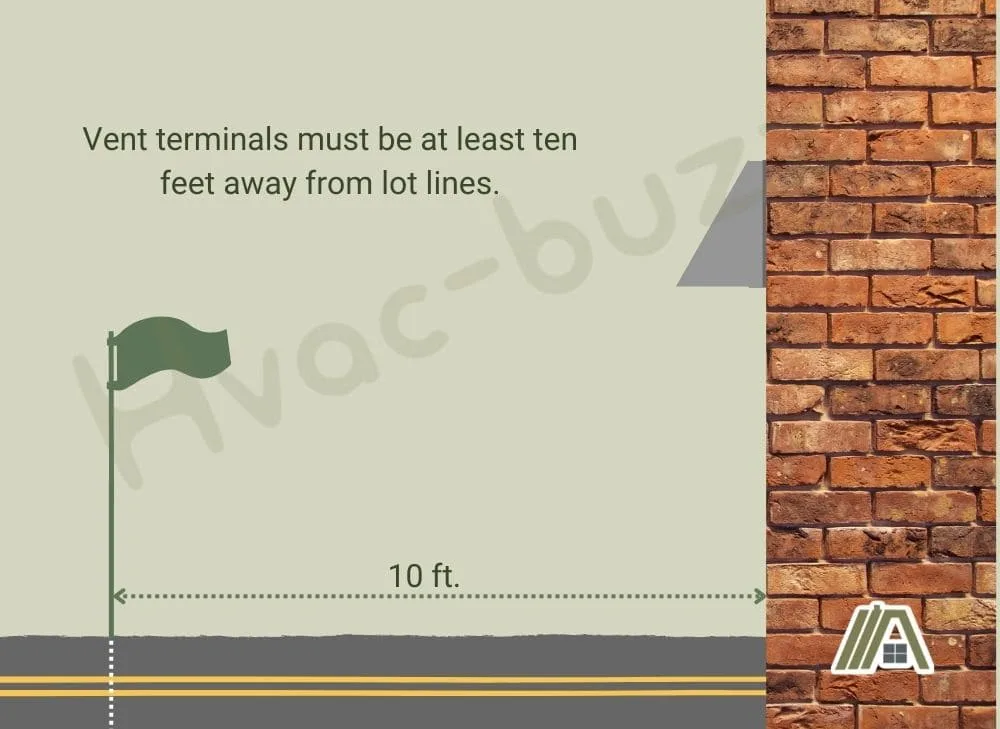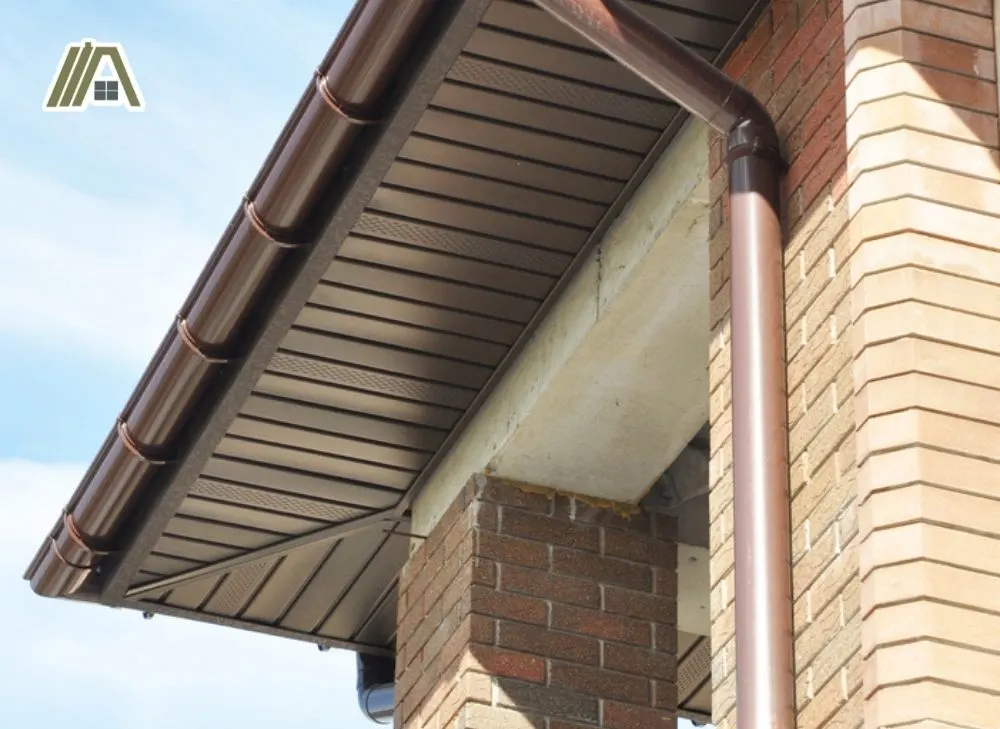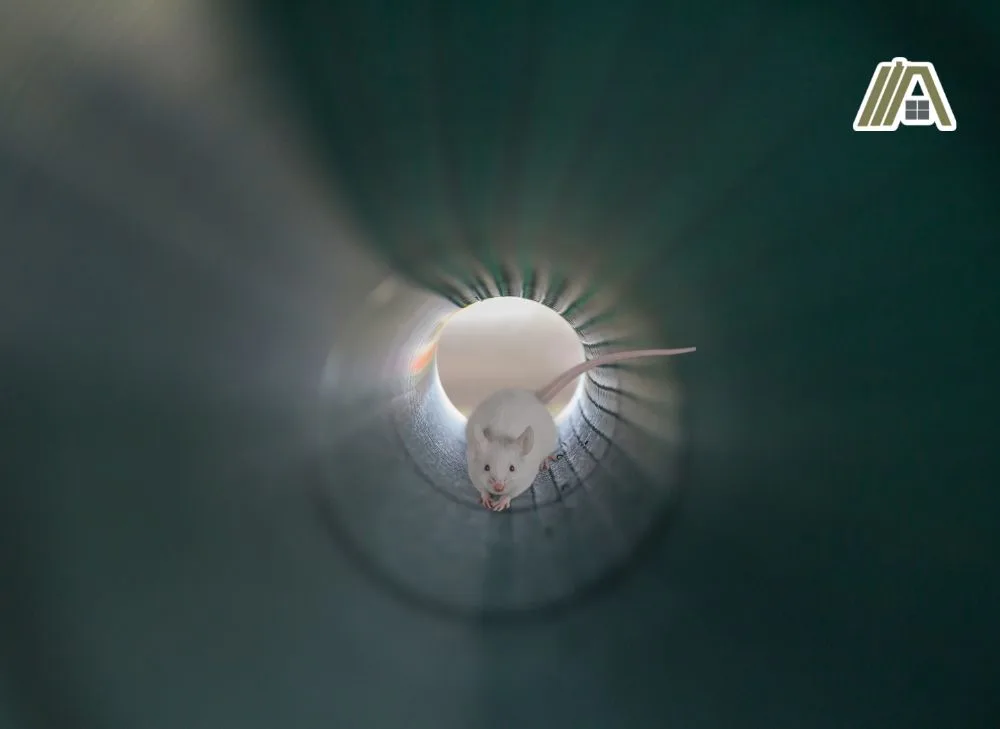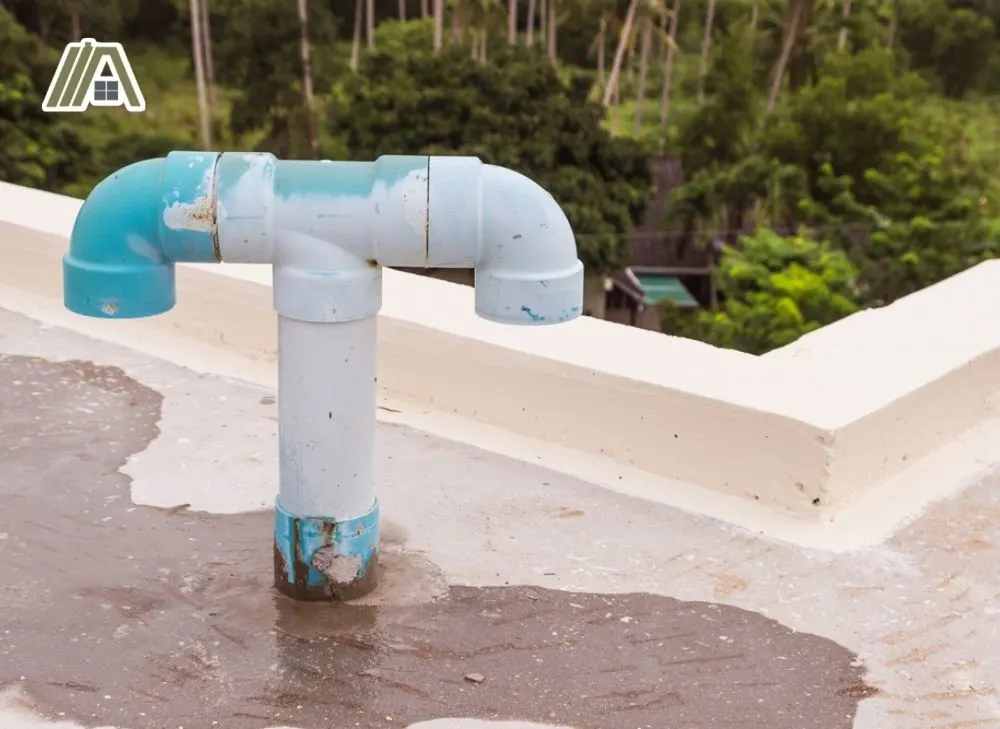Plumbing vents release sewer gases, so choosing the location of the vent is important. Many people go through the roof. However, this is not the only option available to a homeowner.
The International Residential Code (IRC) has many rules that regulate plumbing vent termination, including where the vent can be located.

Plumbing stack vents can go through the wall provided it is sufficiently far away from elevated ground, lot lines, and openings into the house. The vent will also need to be covered to prevent animals and birds from getting in, and it cannot be situated on walls that have vents in the overhang.
Stack Vents Can Terminate Through a Sidewall
According to Section P3103.1 of the IRC, the plumbing vent can terminate through rooftops or sidewalls. From a later regulation, we can infer that these vents can also go through the soffit.
So, as long as the proper vent termination conditions set by the IRC are met, plumbing stack vents can go through a wall.
Conditions of Sidewall Termination
Sections P3103.1.4 and P3103.5 of the IRC lay out guidelines for the best location of a stack vent (the terminal part of the main vent stack; the part that leads to the outside).
Let’s dive into these guidelines.
Lot Line Consideration
Vent terminals must be at least ten feet away from lot lines.

As I mentioned at the beginning of this article, plumbing vents carry sewer gases to the outside so that they do not stay in your home, where they can cause health issues and unpleasant odors.
Toxic components in sewer gas include hydrogen sulfide and ammonia. Exposure to such gases can lead to headaches, nausea, and even death with high enough concentrations. Some of the substances in sewer gas are also highly flammable.
If plumbing vents are too close to lot lines, then your sewer smells and gases can readily become your neighbors’ problem, which is not great for fostering good relationships.
Nothing you do on your property should dictate what your neighbor can do on theirs.
Improperly located vents on your side can mean that your neighbors have to reconsider the positioning of their windows, exhaust vents, doors, and entertainment areas.
Distance From Ground
The vent terminal for your plumbing stack vent must be at least ten feet away from the highest point of elevation in a ten-foot radius.
If your yard is fairly level, you can just measure ten feet from the point where your house meets the ground.
If, however, your house is built into a slope or you have a raised area in your yard, then you will have to measure ten feet from this point (again, only if this point is ten or more feet from the vent).
The reason for this rule is to prevent sewer gas from accumulating around your house, where there is limited wind action to disperse the noxious gases.
Overhangs with Vents
Your stack vent must also not terminate under an overhang with vents.
These vents would include the passive attic vents often located in the soffit. If you don’t know what a soffit is, it is the underside of the eaves (the part of the roof that overhangs the house) and it is perpendicular to the fascia, which is the side of the eaves that you see.

These vents are comprised of small holes that provide air to the attic, ventilating it and helping to mitigate the collection of hot air at the highest point of the house.
If your plumbing stack vents were to terminate under an overhang that provides direct access back into the house, some sewer gases will likely make their way into your attic.
From there, the gas can make its way into the occupied areas of your home, putting the health of your family as well as your home at risk.
This is a fairly important rule when it comes to sidewall venting of stack vents because if your house has eaves, then these are located over your sidewall. If there are no soffit vents, then you are fine, but you first have to check.
Keeping the Opening Clear
The IRC also requires that measures are taken to prevent birds and rodents from nesting inside of the vents since their nesting can impede airflow.
If your plumbing stack vents were to become clogged or partially blocked, the plumbing gases would not be able to escape and they will build up in your plumbing system. Furthermore, it will be more difficult for outside air to enter the plumbing vents to rectify pressure imbalances.
You could end up with burst pipe connections, overflowing toilets, slow-draining basins, backflow into your washer and dishwasher, and other such nightmarish occurrences.
The IRC does not specify what type of measures are taken to prevent birds and rodents from entering the stack vent. But they do say that these measures cannot decrease the open area of the vent pipe (for example, you cannot put a cap on a stack vent).

Vertical Distance From Air Intakes
The IRC dictates that plumbing vents must terminate at least four feet below air intakes and at least three feet above air intakes.
Obviously, you wouldn’t want the odorous gases leaving the vent and entering the house again, but why would there be a difference in how far they can be from intakes vertically above or below?
The main reason this specification is in place is because of the temperature of the sewer gas contained within the plumbing vents.
A large amount of wastewater in plumbing pipes is warm, whether it’s from a bath, shower, or from a dishwasher. Naturally, the gases from this warm waste water would also be warm, causing it to rise.
Because of sewer gas’s natural tendency to rise, vents below intakes are more problematic than vents above air intakes, which explains the difference in required distance.
Horizontal Distance From Air Intakes
In order to comply with the IRC, stack vents must terminate at least ten feet away, horizontally, from any air intakes into the home.
If the gases naturally rise, then why is the horizontal distance so much larger than the vertical distance?
The most likely reason for this difference stems from the fact that air enters windows horizontally.
Rather than pulling from above or below, air preferentially flows perpendicularly to the opening of windows.
Another way to explain it is that the easiest way to enter a vertical opening is perfectly horizontal. Air uses this principle.
For this reason, it is more likely for sewer gas from plumbing vents to enter when they are released at the same horizontal level as the window rather than above or below it.
Should a Stack Vent Terminate Through the Wall?
Although the IRC does allow your stack vent through a wall, this is not a very popular choice. On the other hand, it might be the better choice.
Pros
If terminating your plumbing vents through the wall is closer than terminating through the roof, you can save money and time when installing the vents since you would use less material and would spend less time installing.
Not venting your plumbing exhaust onto the roof would be especially favored if you have a flat roof used for entertainment. A protruding roof vent can be an eyesore (it won’t be a tripping hazard because if people can gather on the roof, the pipe has to extend seven feet above the roof).

Installation through a sidewall would also be easier than through a roof because roofing material is notoriously very difficult to work with while the side of a home is less robust. However, this is not true if the wall is made of bricks or concrete panels.
Not having a horizontal vent opening may lead to less debris, snow, and rain falling into your plumbing vents and clogging or blocking them.
Cons
The sides of your home are often nearer to property lines, windows, doors, and other air intakes, making placement of the wall vent more difficult.
Birds and rodents can find it easier to enter through a sidewall vent because it’s a horizontal pipe as opposed to a vertical one. While the IRC does try to account for this by requiring measures to be taken against this, it is not always easy to find and implement an acceptable measure.
It’s easier for the escaping sewer gases to get trapped against the house when you have a sidewall stack vent.
These vents also stick out like a sore thumb on the side of your home, decreasing the aesthetic appeal of your home.
Sources
https://codes.iccsafe.org/content/IRC2021P2/chapter-31-vents#IRC2021P2_Pt07_Ch31_SecP3103.1
https://www.ahs.com/home-matters/repair-maintenance/learn-about-plumbing-vents/
